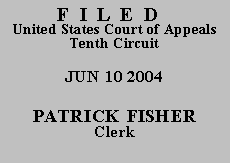

| UNITED STATES OF AMERICA,
v.
ENRIQUE PEDRAZA |
|
In 1991, following trial by jury, Mr. Pedraza was convicted in federal court of conspiracy with the intent to distribute, and possession with intent to distribute in excess of five kilograms of cocaine, violations of 21 U.S.C. §§ 841(a)(1) and 846. He was sentenced to 384 months imprisonment. This court affirmed his convictions on appeal. See United States v. Pedraza, 27 F.3d 1515 (10th Cir. 1994).
On September 23, 2002, more than ten years after his conviction, Mr. Pedraza filed a Rule 33 motion in the district court requesting a new trial on the basis of newly discovered evidence. R. Doc. 1. In his motion, Mr. Pedraza claimed that prosecutors had withheld potentially exculpatory evidence in violation of Brady v. Maryland, 373 U.S. 83, 87 (1963). In response, the district court found Mr. Pedraza's petition to be untimely, as Fed. R. Crim. P. 33 requires that such a motion be filed within three years of a verdict or finding of guilty.(1) R. Doc. 5 at 1. The court offered Mr. Pedraza the option of either withdrawing his motion for a new trial, or having it recharacterized as a § 2255 motion. Mr. Pedraza immediately appealed that decision, whereupon we found that the district court order did not constitute a final judgment and we therefore lacked jurisdiction to entertain the appeal. See 28 U.S.C. § 1291; United States v. Pedraza, No. 02-2313, 2003 WL 21246583 at *2 (10th Cir. May 30, 2003). We did, however, instruct Mr. Pedraza to inform the district court whether he wished his motion to be reviewed as one brought under Rule 33, or § 2255. Id. In accordance with this directive, Mr. Pedraza filed a motion with the district court renewing his intention to seek relief under Rule 33, rather than under § 2255. R. Doc. 9 at 2. In apparent accordance with this request, the district court considered Mr. Pedraza's motion under Fed. R. Crim. P. 33 and dismissed it as time barred and not eligible for equitable tolling. R. Doc. 11.
On appeal, Mr. Pedraza challenges the district court's finding that his Rule 33 motion is not eligible for equitable tolling. Specifically, Mr. Pedraza contends that because the prosecution's active suppression of exculpatory evidence impeded his ability to raise his claim, equitable tolling should apply to save his otherwise time barred motion. See Aplt. Br. at 11-14. Despite his heavy reliance on potential injustices wrought by a violation of the Brady rule, Mr. Pedraza's motion fails to recognize that the district court lacks jurisdiction to extend the time period for filing of a Rule 33 motion. Congress has made it clear that "[a]ny motion for a new trial grounded on newly discovered evidence must be filed within 3 years after the verdict or finding of guilty." Fed. R. Crim. P. 33(b)(1). Further, "[t]he court may not extend the time to take any action under [Rule 33]." Fed. R. Crim. P. 45(b)(2); see United States v. Robinson, 361 U.S. 220, 224 (1960). Although equitable tolling is within the power of the district court in the context of a § 2255 motion, see Miller v. Marr, 141 F.3d 976, 978 (10th Cir. 1998), it is not on a Rule 33 motion. Because Mr. Pedraza has chosen to proceed under Rule 33, he must accept the jurisdictional limitations. See United States v. Renick, 273 F.3d 1009, 1019 (11th Cir. 2001).
Entered for the Court
Paul J. Kelly, Jr.
Circuit Judge
*. This order and judgment is not binding precedent, except under the doctrines of law of the case, res judicata, and collateral estoppel. This court generally disfavors the citation of orders and judgments; nevertheless, an order and judgment may be cited under the terms and conditions of 10th Cir. R. 36.3.
2. After examining the briefs and the appellate record, this three-judge panel has determined unanimously that oral argument would not be of material assistance in the determination of this appeal. See Fed. R. App. P. 34(a); 10th Cir. R. 34.1(G). The cause is therefore ordered submitted without oral argument.
1.We apply the three-year period, but would reach the same result with the pre-1998 version of Rule 33, which provided that the motion was required to be made two years after final judgment. See United States v. Correa, 362 F.3d 1306, 1308 (11th Cir. 2004); United States v. Bowler, 252 F.3d 741, 745 (5th Cir. 2001).